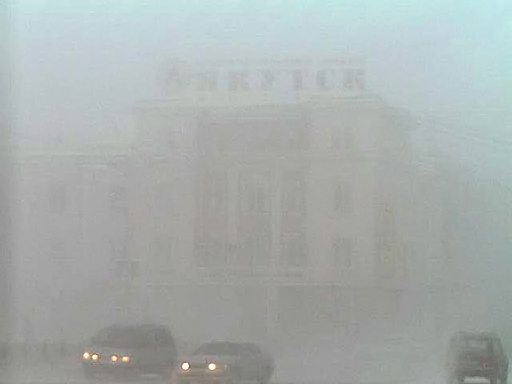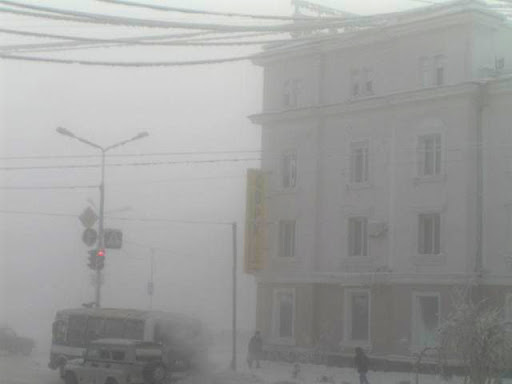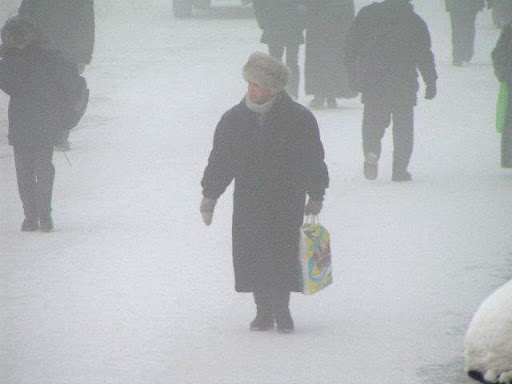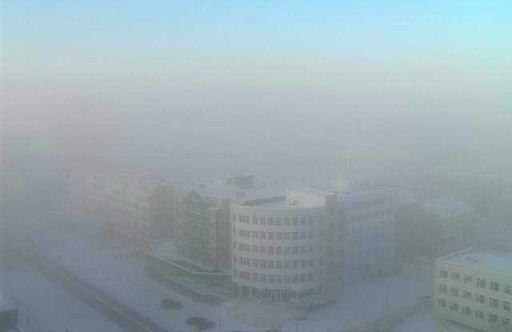At minus 5C, the cold is quite refreshing and a light hat and
scarf are all that’s required to keep warm. At minus 20C, the
moisture in your nostrils freezes, and the cold air starts
making it difficult not to cough. At minus 35C, the air will
cold enough to numb exposed skin quickly, making frostbite a
constant hazard. And at minus 45C, even wearing glasses gets
tricky: the metal sticks to your cheeks and will tear off
chunks of flesh when you decide to remove them.
I know this because I’ve just arrived in Yakutsk, a place where
friendly locals warn you against wearing spectacles outdoors.
Yakutsk is a remote city in Eastern Siberia (population
200,000) famous for two things: appearing in the classic board
game Risk, and the fact that it can, convincingly, claim to be
the coldest city on earth. In January, the most freezing month,
average “highs” are around minus 40C; today the temperature is
hovering around minus 43C, leaving the city engulfed in an
oppressive blanket of freezing fog that restricts visibility to
10 metres. Fur-clad locals scurry through a central square
adorned with an icy Christmas tree (left over from the New Year
holidays) and a statue of a strident Lenin, with one arm aloft
and pointing forward, thoroughly unfazed by the cold.
A couple of weeks ago, Yakutsk hit the headlines after a series
of burst pipes caused Artyk and Markha, two nearby villages, to
lose their heating for several days. The temperatures then were
minus 50C. Television footage of the ensuing “big freeze”
showed groups of people huddled in swathes of blankets
gathering round makeshift wood-fired stoves to keep warm. It
looked like fun – of a sort. So I decided to come to Yakutsk
for myself to find out how people manage to survive, and go
about something resembling daily life, in the world’s coldest
place.
I soon discover that, in local parlance, temperatures in the
minus 40Cs are described as “cold but not very cold” (I’d been
told about the “exceptionally warm” November last year, when
the temperature didn’t drop below a cosy minus 25C). In Moscow,
which has been my home town for four years, it’s only hit minus
30C once, in early 2006, and the mercury rarely gets lower than
anything a good, solid winter coat won’t protect you from. So,
before venturing outdoors in Yakutsk for the first time, I have
decided to don a suitcase’s worth of clothes to protect me
against the cold.
Starting from the feet and working up, I’m wearing: a pair of
cotton socks, with a pair of thermal socks over them; a pair of
ankle-high Gore-Tex boots; a set of thermal long-johns; a pair
of jeans; a thermal undershirt (a present from a worried family
member); a long-sleeved T-shirt; a tight-fitting cashmere
jumper; a fleece; a padded winter coat with hood; a thin pair
of woollen gloves (so that when I take the outer pair off to
take photographs I won’t expose naked flesh); a pair of gloves
made of wool and Thinsulate; a wool scarf; and a woolly
football hat.





0 comments:
Post a Comment